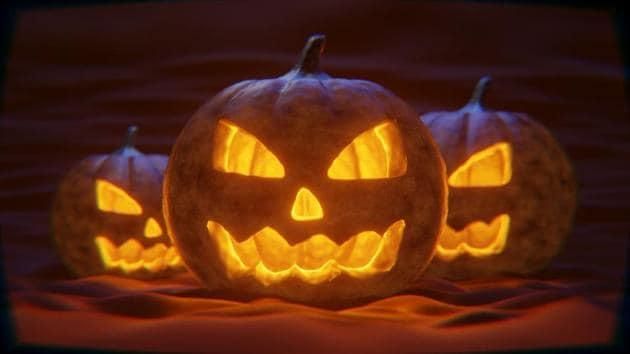Halloween is a holiday that has been around for centuries. It has its roots in pagan celebrations and was originally known as All Hallows Eve. Over time, Halloween has evolved into the spooky holiday we know today.
If you're curious about the history of this spooky holiday, then this blog post is for you. We'll be exploring the origins of Halloween and how it has changed over the years. So whether you're a history buff or just looking for some fun facts, read on to learn more about Halloween!
Origins of Halloween
The celebration of Halloween has its origins in the ancient Celtic festival of Samhain. The Celts, who lived 2,000 years ago in the area that is now Ireland, the United Kingdom, and northern France, celebrated their new year on November 1. This day marked the end of summer and the harvest and the beginning of winter, a time of death and darkness. Celts believed that on the night before the new year, the boundary between the worlds of the living and the dead became blurred. On October 31 they celebrated Samhain, when it was believed that ghosts came back to earth. In addition to celebrating the lives of their ancestors, Celts thought it was a good time to cast out evil spirits. To ward off ghosts and other evil spirits, people wore masks when they left their homes after dark so that ghosts would mistake them for fellow spirits.
How Halloween has changed over the years
It's hard to believe that Halloween has been around for over two thousand years. The holiday has undergone many changes over the years, both in its origins and how it is celebrated.
Halloween's roots can be traced back to the ancient Celtic festival of Samhain. This festival was a time when people would light bonfires and dress up in costumes to ward off evil spirits. Over time, this festival evolved into what we now know as Halloween.
One of the biggest changes to Halloween is how it is celebrated. In the past, people would often go door-to-door asking for food or money. This would occasionally lead to mischief or even violence. nowadays, most people prefer to stay home and hand out candy to trick-or-treaters. This change has made Halloween a much safer holiday for everyone involved.
What hasn't changed about Halloween is its ability to bring people together. Whether you're dressing up in a costume, going out on the town, or staying home with your family, Halloween is a great excuse to have some fun and make some memories.
Halloween in different cultures
Halloween is celebrated in many different cultures around the world. In some cultures, it is a time to remember the dead, while in others it is a time to celebrate life.
In Mexico, the Day of the Dead (Día de los Muertos) is celebrated on October 31st. Families build altars to honour their deceased loved ones and decorate them with flowers, food, and other items. They also visit the graves of their loved ones and leave offerings.
In Ireland, Halloween is known as Samhain. It was originally a pagan festival that marked the end of summer and the beginning of winter. Today, it is still a time to remember those who have passed away. Families often light candles in memory of their loved ones and leave out food for them on Halloween night.
In China, the Ghost Festival (鬼節) is celebrated on the fifteenth day of the seventh month in the lunar calendar. It is a time when people believe that ghosts and spirits come out from the underworld and roam among us. Families offer food and gifts to these spirits in order to appease them.
So, although Halloween may be celebrated differently in different cultures, it remains a time to remember those who have passed away and to celebrate life.
Modern Halloween celebrations
Halloween is a holiday that is celebrated by people all over the world. It is a time for people to dress up in costumes, go trick-or-treating, and attend Halloween parties.
People have been celebrating Halloween for centuries. The holiday has its roots in ancient Celtic festivals. These festivals were held to mark the end of the harvest season and the beginning of winter. They were also times when people would light bonfires and tell scary stories.
The modern Halloween celebrations that we know today started in the United States in the 19th century. Americans brought many of their Halloween traditions with them when they emigrated from Europe. These traditions includes dressing up in costumes, going door-to-door asking for candy, and carving pumpkins into jack-o’-lanterns.
Halloween Theme
In the early days of Halloween, people would dress up in costumes and go door to door asking for food or money. This was known as "guising" and was a way of begging for goods. As time went on, people began to associate this holiday with death and the supernatural. This is likely due to the fact that October 31st is the day before All Saints' Day, when Christians would pray for the souls of the dead.
By the 19th century, Halloween had become a celebration for both children and adults. Party games such as bobbing for apples and Snap-Apple were popular, as well as telling ghost stories. Trick-or-treating also became common during this time. People would dress up in costumes and go door to door asking for candy or other treats.
Today, Halloween is still celebrated much in the same way as it was in the past. Children dress up in costumes and go trick-or-treating, while adults often host Halloween parties complete with games, food, and drinks.
Conclusion
Halloween has been around for centuries, and its history is rich and varied. From pagan roots to Christian influence, the holiday has undergone many changes over the years. Today, Halloween is a popular time for parties, costumes and candy, but its origins are still fascinating to explore. If you want to learn more about the holiday and its customs, take some time to research the history of Halloween. You might be surprised at what you discover.
FAQs
This Halloween, take a walk through the origins of this spooky holiday with some frequently asked questions about its history.
When did Halloween first start?
The first Halloween was thought to be around 4000 BC in Ireland. It was originally called Samhain, which means "summer's end" in Gaelic. This was a time to celebrate the end of the harvest and the beginning of the dark winter.
What is the Jack-o'-lantern?
The Jack-o'-lantern is a symbol of Halloween that comes from Irish folklore. The story goes that a man named Jack was so stingy that he was not allowed into heaven when he died. He was sent back to Earth with only a candle to light his way. He hollowed out a turnip and put the candle inside to make a lantern. Now, people carve pumpkins into jack-o'-lanterns to light their way on Halloween night.
What does candy have to do with Halloween?
In America, children used to go door-to-door begging for food on Halloween night. This was called "going a-souling." In return for food, they would say prayers for the dead. As time went on, people started giving candy instead of food because it was easier and less messy. Today, trick-or-treating is one of the most popular Halloween traditions.






 StableDiffusion
StableDiffusion Photo by
Photo by  Photo by
Photo by 
 full parking
StableDiffusion
full parking
StableDiffusion









